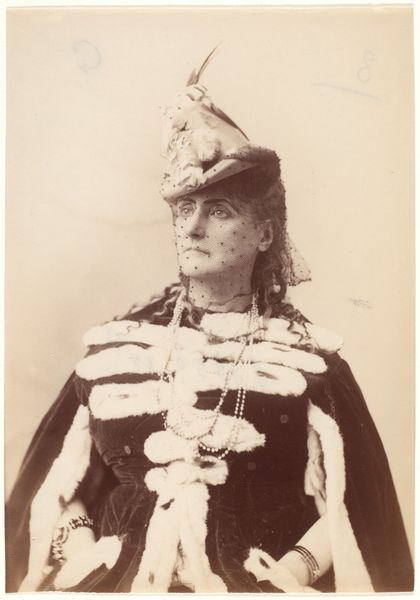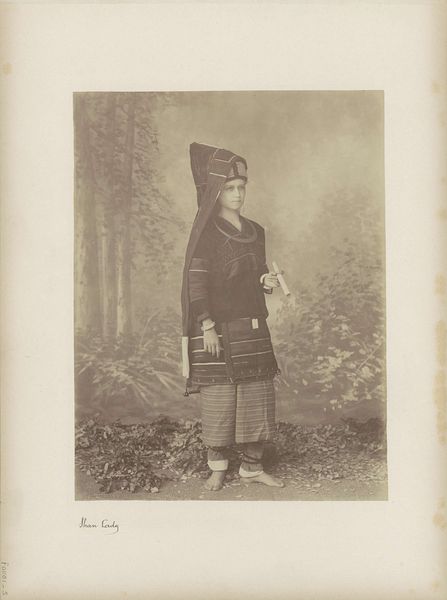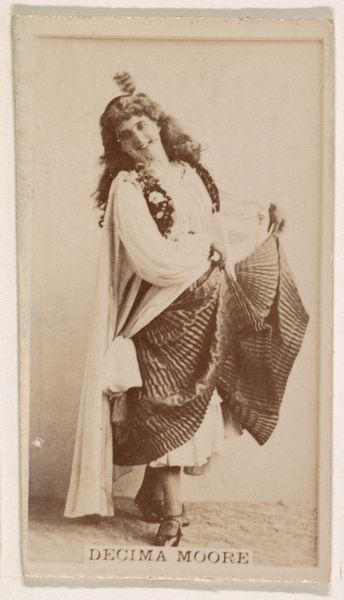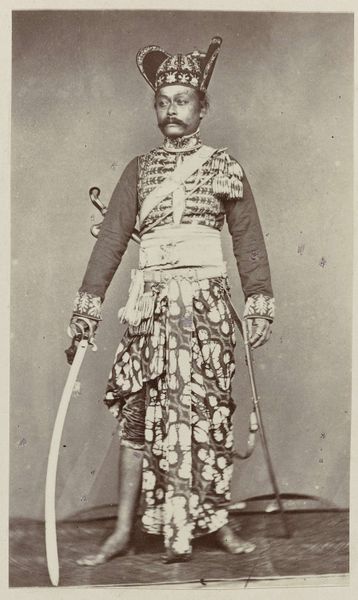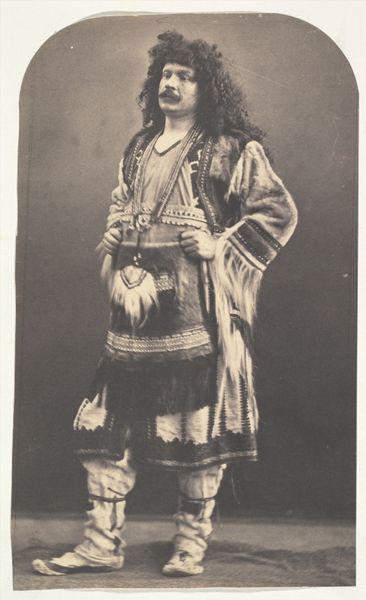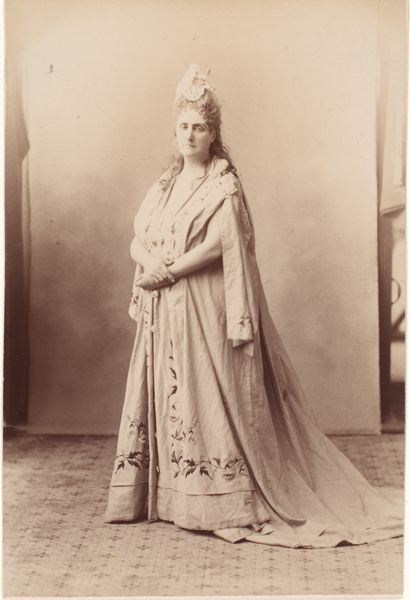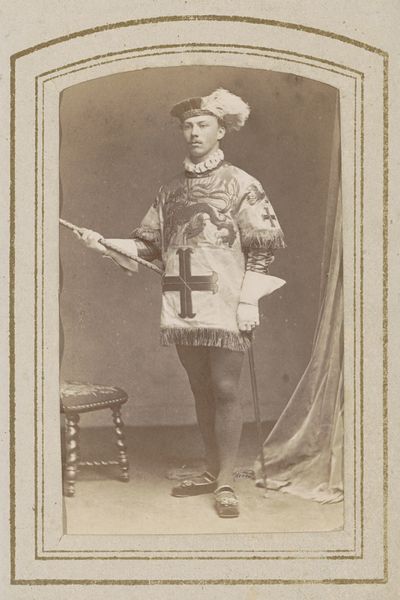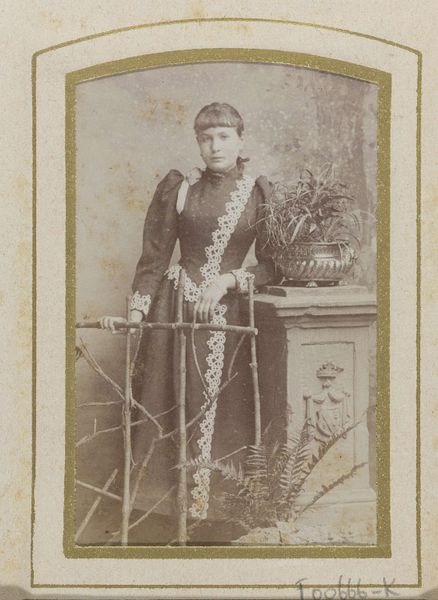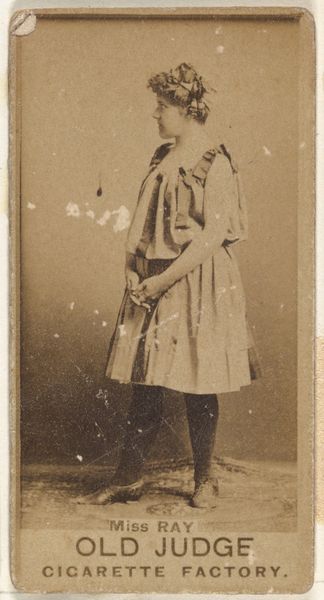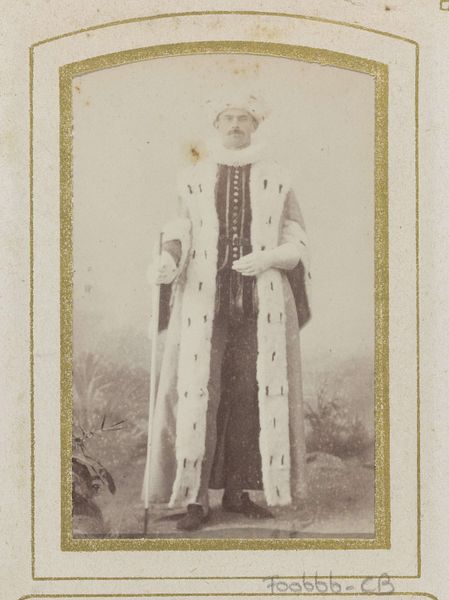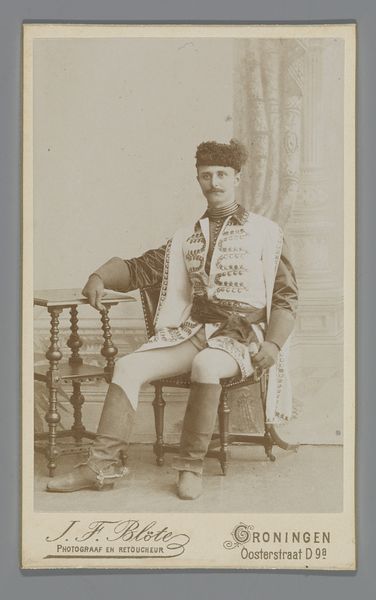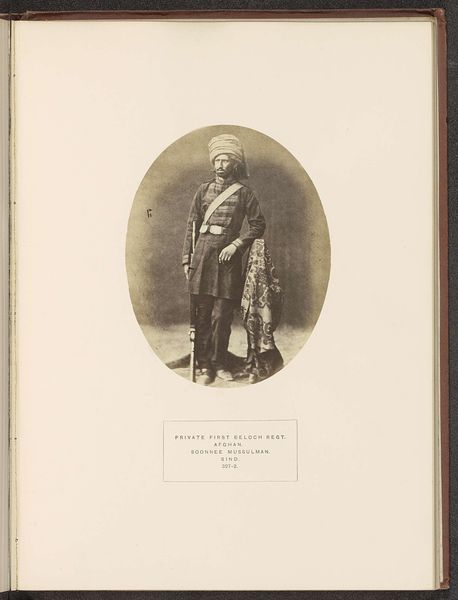![[La Comtesse in Ermine Cape] by Pierre-Louis Pierson](/_next/image?url=https%3A%2F%2Fd2w8kbdekdi1gv.cloudfront.net%2FeyJidWNrZXQiOiAiYXJ0ZXJhLWltYWdlcy1idWNrZXQiLCAia2V5IjogImFydHdvcmtzLzY3NDY3YmY2LTQ3NzEtNGYxZi1hMGE1LTg0ZTBhNjIwMDQxNi82NzQ2N2JmNi00NzcxLTRmMWYtYTBhNS04NGUwYTYyMDA0MTZfZnVsbC5qcGciLCAiZWRpdHMiOiB7InJlc2l6ZSI6IHsid2lkdGgiOiAxOTIwLCAiaGVpZ2h0IjogMTkyMCwgImZpdCI6ICJpbnNpZGUifX19&w=3840&q=75)
daguerreotype, photography
#
portrait
#
daguerreotype
#
photography
#
historical photography
#
19th century
#
history-painting
Dimensions: 9.2 x 14.9 cm (3 5/8 x 5 7/8 in.)
Copyright: Public Domain
Curator: This daguerreotype from the 1860s, titled *[La Comtesse in Ermine Cape]* by Pierre-Louis Pierson, is striking. Editor: Yes, it is! I'm really drawn to how the ermine cape creates this sense of aristocratic grandeur. How do you interpret this work, especially considering the context of the time? Curator: I see a carefully constructed performance of identity. This image, likely commissioned, positions the Comtesse within a very specific visual language of power. Consider the semiotics of the ermine: historically, it’s been tied to royalty and nobility, signifying purity and status. How does the use of photography itself—a relatively new medium at the time—affect this portrayal? Editor: I hadn’t thought about that. The photograph itself becomes part of the performance, almost like asserting her place in modernity while clinging to traditional symbols of power. Does that tension tell us anything about the changing social dynamics of the 19th century? Curator: Absolutely. The rise of photography coincided with shifts in social hierarchies and the increasing visibility of women, particularly within aristocratic circles. Images like these circulated and contributed to constructing and solidifying social ideals and reinforcing class distinctions. But let's consider this performance of identity. Who gets to perform, and for what audiences? Who is excluded from that performance? Editor: It really prompts you to think about how identity is not just something innate but actively constructed through images, even back then. Curator: Precisely. And critically, it urges us to deconstruct these constructed narratives. Editor: I hadn't considered that photographs were actively working to create and preserve class divides. Curator: By looking at the photograph as an exercise in identity and privilege, and thinking about the subject, but also the artist and viewers and what their social context was, we gain a lot of insight into 19th century dynamics.
Comments
No comments
Be the first to comment and join the conversation on the ultimate creative platform.
